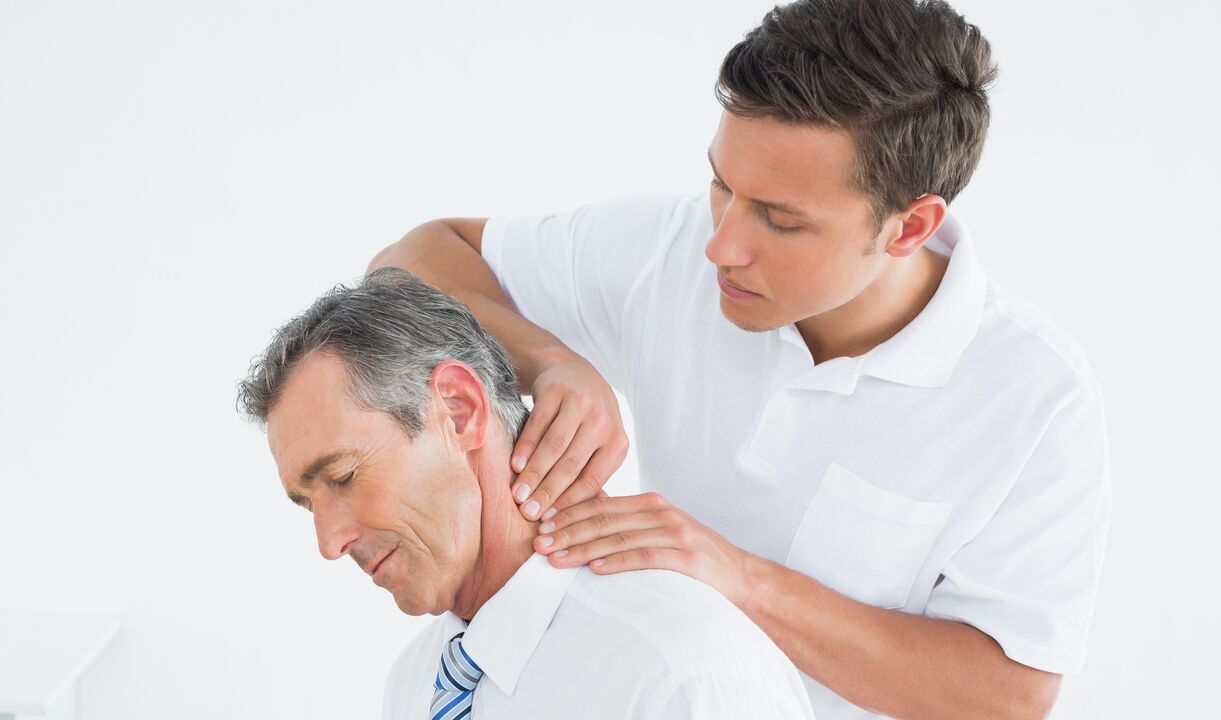Back and neck injuries, heavy physical exertion, sedentary lifestyle, pregnancy, old age - all these are the causes of diseases of the spine that support the human body. The symptoms of osteochondrosis, cervical, thoracic or lumbar, are different, so even subtle signs cannot be ignored. The sooner treatment begins, the sooner recovery will occur. If you notice the first manifestations of the disease in yourself, consult a doctor and have yourself examined.
What is osteochondrosis
One of the most frequently diagnosed diseases of the spine is osteochondrosis, the signs of which can be found in every third person after 35 years. Older people who are overweight, former athletes or workers whose professional activity is associated with high levels of stress are particularly affected. Judging by the statistics of recent years, it is clear that the disease is becoming younger and younger. Girls and boys who prefer to lead a sedentary lifestyle no longer surprise doctors with complaints of back pain.
Osteochondrosis is a disease of the spine, in which there is a degenerative-dystrophic lesion of the intervertebral discs. If left untreated, the destruction of the vertebrae themselves begins, leading to disability, atrophy and paralysis of the limbs. Also, such a problem can lead to a stroke of the spinal cord, sciatica, kyphosis, protrusion. At the first signs of the disease, you need to see a doctor.
Each degree of this dystrophic disease of the spine is characterized by its own set of symptoms and signs. There are four levels in total. At the first stage, pathological changes occur, which are manifested by dehydration and a decrease in the height of the intervertebral discs. In the second, the sagging of the vertebral muscles and ligaments is corrected, spondylolisthesis is diagnosed (displacement, curvature of the intervertebral disc). The third stage is characterized by the appearance of prolapses and protrusions of the intervertebral discs. At the last stage, there is a deformation of the vertebrae, on which bone outgrowths - osteophytes - grow.
symptoms
Signs and symptoms of osteochondrosis depend on what stage of development it is at. The type of illness also plays an important role. Osteochondrosis affects different parts of the spine: cervical, thoracic, lumbar. Some of the patient's signs may not be related to the spine, e. g. B. heart or headache, numbness of the fingers and toes. At the same time, the patient complains that his throat hurts or his chest hurts. It is very important to seek help in the hospital. Treatment of the disease takes about 3 months, plus a year for rehabilitation.
The most common symptoms of osteochondrosis:
- back pain between the shoulder blades;
- Dizziness;
- lump in the throat;
- nausea;
- loss of feeling in the limbs;
- high temperature;
- limb numbness.

Cervical osteochondrosis
Considering the signs depending on the type of disease, then problems with the cervical vertebrae are dangerous due to their proximity to the brain. This is where the blood vessels that carry blood to the head partially overlap. Symptoms of osteochondrosis of the cervical spine are:
- Dizziness;
- clouding of the eyes;
- noise in the ears;
- "drift" when walking;
- Pain in the back of the head, arms, shoulders.
Thoracic osteochondrosis
This type of disease affects the heart, as a result of which the patient begins to complain of such symptoms:
- pains in the chest, in the back, in the shoulders;
- Heart pain;
- Angina;
- lump in the throat;
- attacks of shortness of breath;
- shortness of breath;
- numbness of hands and feet.
Lumbar osteochondrosis
A disease of the lower spine leads to problems with the pelvic organs. Sexual function suffers. Signs of lumbar osteochondrosis are:
- pain in the tailbone, sacrum, lower back;
- muscle spasms of the thighs, calves, buttocks;
- shooting in the legs;
- numbness of the limbs;
- poor mobility of joints;
- Aggravation of diseases of the genitourinary system.

Symptoms of migratory osteochondrosis
This concept means osteochondrosis, which develops in two parts of the spine, for example, the cervicothoracic type of the disease. In this case, the patient feels painful signs that appear first in one place on the back, and then in another, i. e. H. The place of pain will move. In this case, the patient can diagnose a violation of the cardiovascular system and even take medication to treat this problem, which is impossible without a medical examination.
Signs of osteochondrosis
Depending on what the disease affects, doctors distinguish four groups of syndromes, each characterized by its own set of symptoms. Syndromes of osteochondrosis are as follows:
- static syndrome. This concept refers to a change in the shape of the spine. There is a violation of posture: a person begins to stoop, bend, lowering one shoulder under the other. scoliosis appears.
- neurological syndrome. The disease affects the nervous system. The person complains of tingling, numbness. Neurological symptoms develop into complications in the form of paralysis or seizures.
- vascular syndrome. Here we are talking about the squeezing of the vessels by the processes of the vortex. This situation is often observed with the cervical form of the disease. The result is a violation of blood circulation, lack of oxygen to the brain, which leads to opacities, dizziness, nausea, loss of hearing and vision. With thoracic or lumbar osteochondrosis, chronic ischemia of internal organs is observed.
- trophic syndrome. It is characterized by insufficient nutrition of tissues with essential substances. As a result, ulcers, inflammation and other defects appear on the skin.

The first signs of osteochondrosis
Both at the initial stage of the disease and at the last stage, the patient does not feel any discomfort. Only a doctor can detect a problem at this stage of development, for example when diagnosing another disease or during a medical examination. Diagnostic methods are as follows:
- X-ray of the spine in two projections, if necessary X-ray of a single vertebra;
- Magnetic resonance imaging (determination of a herniated disc, assessment of the condition of the spinal cord);
- discography (examination of the intervertebral disc);
- electrophysical examination (determination of the degree of damage to the nerve tracts).

























